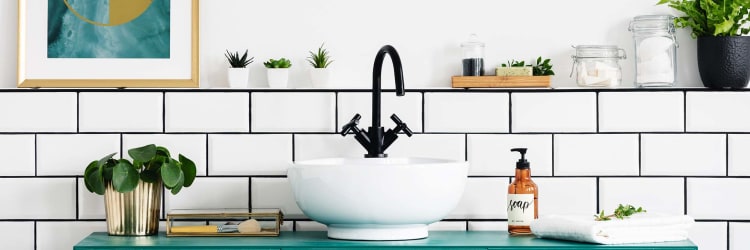Do tiles need grout?
Grout plays an integral part in any tile installation, so it's usually recommended always to use it. However, if you genuinely dislike the look of grout, there are possible ways to avoid it, such as using a peel & stick type or a mimic-like luxury vinyl tile that can be used either with or without grout.
A third possibility is a rectified ceramic, although many installers still will recommend even minimal grout use. But, again, talk to the experts at our tile shop who will help you decide what’s best for you.
Protecting and guarding
It's important to remember that a floor tile (or ones for walls, backsplashes, etc.) can last up to 50 years or more when taken care of properly. However, they all tend to shift and move, so it's the grout that has held them firmly in place and acts as a buffer. Without it, they'll crown each other, adding pressure and eventually cracking.
There'll be slight gaps between the tiles when there's no grout to let water seep through to the substrate and collect food particles and dust (which will be tough to clean).
From a design point of view
Grout provides the finishing touches on a project and, these days, comes in such a broad color palette it's just as much a vital design tool as something to protect and guard against damage.
Grout should be considered any other design element that helps pull a look together, i.e., paint, furnishings, accessories, lighting, etc. It can be used to highlight, contrast, match or complement, adding visual interest and texture.
What are rectified tiles?
When you walk into our tile store, you'll be an almost unlimited number of designs, colors, shapes, and sizes. These include accent and field tiles, as well as rectified ones. Rectified tiles have been finished so that all sides are the same size, making the tile uniform, making the floor look like one sizeable tiled area requiring less grout.








